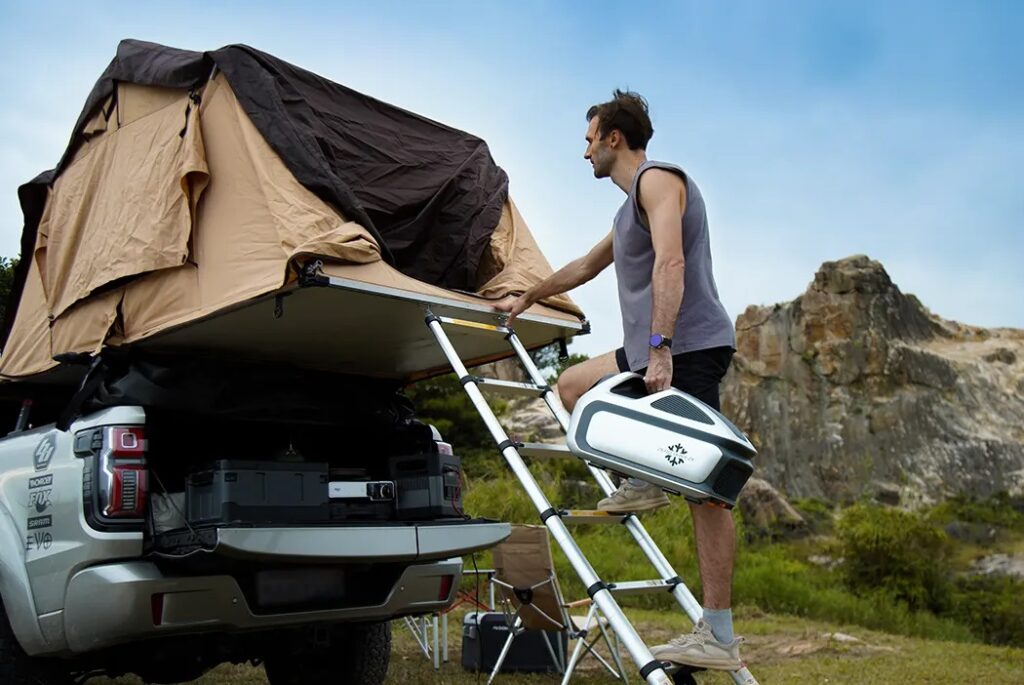In the realm of outdoor cooling, the Zero Breeze portable air conditioner has emerged as a trailblazer, meeting the needs of adventurers, campers, and those craving comfort on their journeys. As the sun sets on the Mark 2 era, the dawn of the Mark 3 model beckons us to unravel its advancements and critically examine whether the accompanying price increase is a worthwhile investment.

From humid campsites to sweltering beach days, Zero Breeze has been a reliable companion. Now, let’s embark on a detailed exploration of how the Mark 3 builds upon its predecessor’s legacy.
Technical Comparison
Let’s start our journey by delving into the technical specifications, tracing the evolution from the Mark 2 to the eagerly awaited Mark 3.
| Zero Breeze Mark 2 | Zero Breeze Mark 3 | |
|---|---|---|
| Cooling Capacity | 2300 BTUs | 5280 BTUs |
| Power Consumption | 240 Watts | 1550 Watts |
| Portability | Weight: 16.5 lbs, Size: 20 x 10 x 11 inches | Weight: 19 lbs, Size: 22 x 10 x 12 inches |
| Feature Modes | 4 Modes: Cool, Fan, Sleep, Strong | 7 Modes: Rocket, Cook, Sleep, Fan, Dry, Care, Heating |
| Sound Level | 52 dB | 46 dB |
Enhanced Cooling Capacity: The Mark 3 takes center stage with a stellar leap in cooling capacity, soaring from 2300 to an impressive 5280 BTUs. This upgrade promises a more efficient cooling performance, making the Mark 3 a formidable contender for larger spaces and challenging climates. Users can now anticipate faster temperature drops and an overall more comfortable environment, a substantial improvement over the Mark 2.

Optimized Power Consumption: In the face of the significant increase in cooling capacity, the Mark 3 manages to optimize power consumption masterfully, showcasing a leap from 240 to 1550 Watts. This not only underscores a commitment to energy efficiency but also extends the device’s battery life – a crucial aspect for those relying on its portability during extensive outdoor adventures.
Improved Portability: Building upon the already portable design of the Mark 2, the Mark 3 takes portability to new heights. Despite a marginal increase in weight, the reduction in overall size enhances convenience for users on the move. This makes the Mark 3 an even more enticing choice for outdoor activities such as camping or beach trips, where every pound and inch counts.
New Functionalities: Beyond the fundamental improvements, the Mark 3 introduces a suite of additional functionalities. Notably, an adjustable thermostat and temperature settings, along with soft-touch buttons on the front dash, set it apart from its predecessors. These new functions add a layer of versatility to the device’s applications, offering users an enhanced level of control and adaptability.
Mark 2 vs. Mark 3: Which one to choose?

As we navigate through these notable enhancements, it’s crucial to address the question of price. The Mark 3 does come with a higher price tag compared to its predecessor, but the enriched cooling capacity, optimized power consumption, improved portability, and added functionalities collectively justify the investment. For users seeking top-notch performance and unmatched convenience, the Mark 3 stands as a compelling upgrade, offering a holistic solution to on-the-go cooling needs.
In conclusion, the Zero Breeze Mark 3 not only builds upon the success of the Mark 2 but elevates the portable air conditioning experience. It offers a comprehensive package for users who prioritize advanced features, providing a decisive edge in the competitive landscape of portable cooling solutions. The decision to invest in the Mark 3 ultimately hinges on individual needs and preferences, but its evident capabilities make it a robust contender, setting new standards in the portable air conditioning market.
| PREVIEW | PRODUCT | |

|
Zero Breeze Mark 3 | Check Price |

|
Zero Breeze Mark 2 | Check Price |

